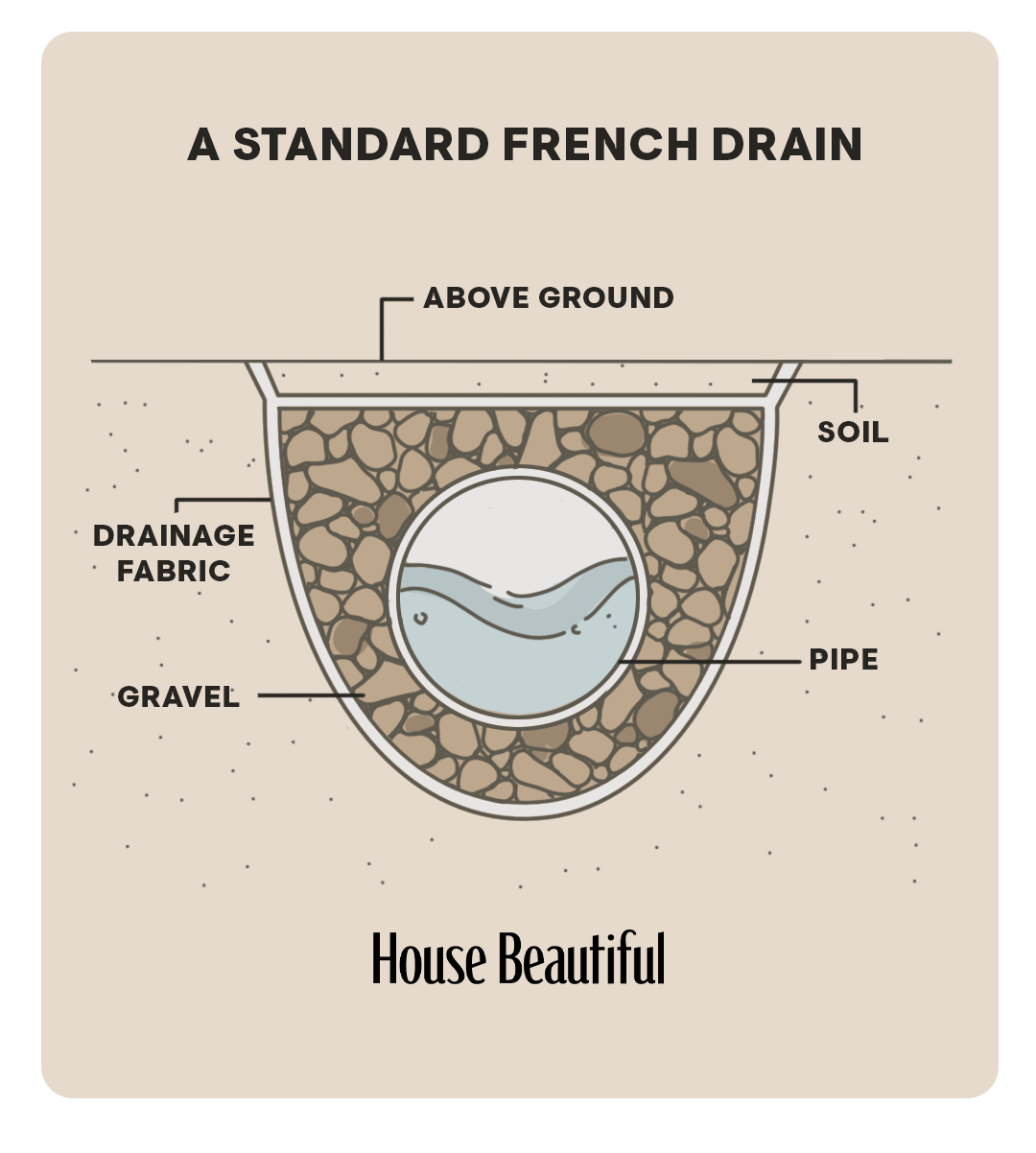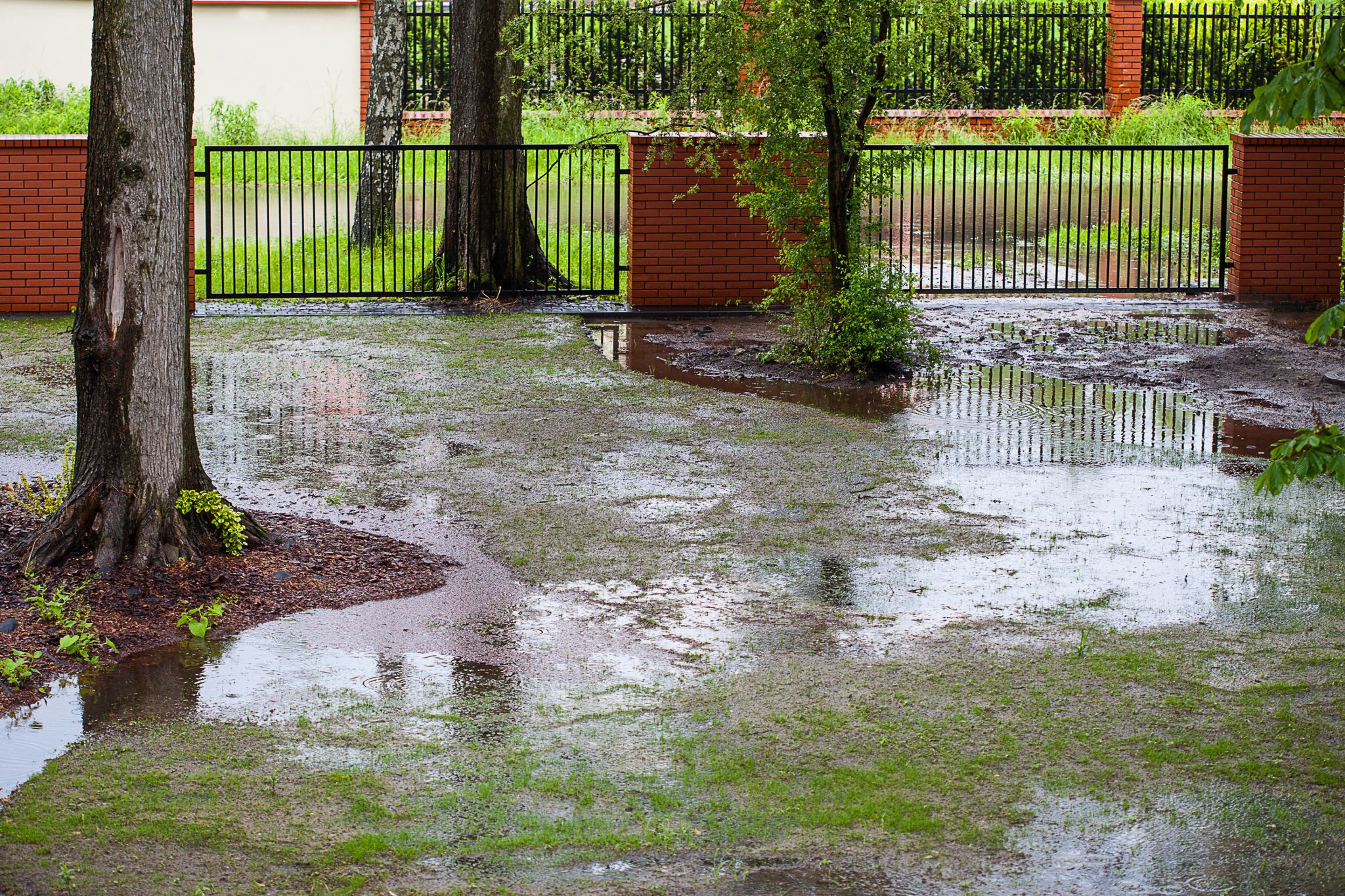Selecting the Most Suitable Contractor for Your Portland French Drain Project
Selecting the Most Suitable Contractor for Your Portland French Drain Project
Blog Article
The Essential Overview to Preserving Your French Drainpipe for Resilient Efficiency
Keeping your French drain is vital to its effectiveness and your residential property's defense. Regular checks can conserve you from expensive fixings and water damage. You'll would like to know what indicators to look for and exactly how often to evaluate your system. Plus, recognizing the cleaning procedure can make a significant difference. Let's discover the necessary steps for ensuring your drain operates well for several years ahead.
Understanding the Function of a French Drain
A French drain is an essential part in taking care of water around your home. It directs excess water far from your structure, stopping flooding and damages. When hefty rainfall falls, the drainpipe accumulates water with a perforated pipe hidden in gravel. This system enables water to move easily, decreasing stress on your basement walls and reducing the risk of leaks.You could wonder how it works in practice. As water saturates the soil, gravity draws it toward the drainpipe. The perforated pipeline catches this water, transferring it to a designated drain area or storm sewer. This process maintains your lawn completely dry and safeguards your home's architectural integrity.Understanding how a French drain functions is crucial to valuing its importance. By successfully directing water away, it aids maintain a secure and dry living atmosphere. Keeping your French drain in leading condition assurances you prevent pricey repair work down the line.
Routine Inspections: What to Try to find
When you're evaluating your French drain, start by examining for any kind of clogs that may be obstructing water flow. Pay focus to indications of surface disintegration around the drainpipe, as this can suggest prospective problems. Regular evaluations will assist keep your drain system working successfully.
Clogged Drain Assessment
Exactly how can you inform if your French drain is blocked? Watch for water merging in your backyard, specifically after hefty rainfall. If you notice areas where water gathers rather of draining, that's a red flag. You need to additionally check the drainpipe outlet; if water isn't draining as it should, there's most likely a clog. Pay attention for uncommon gurgling audios, which can show trapped air. In addition, check the drainpipe's surface for any type of vegetation development, as origins can clog the system and infiltrate. If you scent moldy smells, it can direct to stationary water caused by a blockage. Regularly assessing these indications can help you keep your French drainpipe efficiently and prevent costly repairs.
Surface Area Disintegration Examine

Cleansing Your French Drainpipe: Step-by-Step Guide
Cleansing your French drain is crucial for maintaining it operating correctly. You'll need some details tools and a clear process to guarantee whatever runs efficiently. Let's go through the actions and ideas for maintaining your drain properly.
Tools You'll Need
To tackle the job of cleansing your French drainpipe successfully, you'll desire to gather a couple of vital tools. Initially, get a tough set of gloves to protect your hands from particles and sharp things. A little shovel or trowel will assist you eliminate dust or obstructions around the drain. For removing the inside, a plumber's snake or a high-pressure water nozzle can be extremely beneficial. You'll also require a container for collecting any kind of debris you pull out. Lastly, having a garden hose pipe on hand will make it much easier to wash out the drainpipe and ensure it's streaming efficiently. With these tools ready, you'll be set for a thorough cleaning session!
Cleansing Refine Actions
Beginning by assessing the location around your French drain for any type of visible debris or obstructions. Eliminate leaves, branches, or dust that might obstruct water flow. Next off, check the inlet and electrical outlet locations; clear any obstructions to ensure correct water drainage. Use a garden hose to purge the drainpipe, guiding water into the inlet. This assists remove any kind of accumulated sludge or sediment. Take into consideration using a plumber's serpent to break them up if you see persistent blockages. After cleaning, check the gravel around the drain; renew it if it's gotten rid of. Finally, verify the drain covers are undamaged and firmly in place to prevent debris from going into. Routine cleansing keeps your French drainpipe operating successfully.
Maintenance Frequency Tips
While routine maintenance is essential for your French drain's longevity, knowing exactly how frequently to maintain it can make all the difference. Ideally, you ought to examine your French drainpipe at the very least two times a year, preferably in springtime and loss. After heavy rainfall or snowmelt, check for obstructions or particles. If you observe any kind of standing water, it's time to cleanse your drain.In areas with heavy vegetation, more regular upkeep-- regarding every three months-- may be needed. In addition, think about cleansing your French drain after major storms or if you observe water merging in your lawn. By staying aggressive, you'll ensure your French drain features properly and protects your building from water damages. Normal checks will certainly save you time and cash in the lengthy run.
Identifying Usual Concerns and Their Solutions
When you discover water pooling in your backyard or damp areas in your cellar, it's essential to recognize typical concerns with your French drainpipe and apply efficient options. One frequent trouble is clogging, usually triggered by debris like leaves or sediment. To fix this, you can utilize a pipes snake or a high-pressure water jet to clear blockages.Another issue could be incorrect incline. If your drain isn't sloped properly, water will not move far from your home. You can readjust the incline by excavating and rearranging the drainpipe pipe.Lastly, look for damages or fractures in the drainpipe itself. If you discover any, replacing the damaged areas is very important for peak performance. By addressing these problems without delay, you'll assist guarantee that your French drainpipe proceeds to work properly, securing your residential or commercial property from water damage and maintaining a dry, secure atmosphere.
Seasonal Upkeep Tips for Your French Drain
Dealing with typical problems with your French drainpipe is just the initial step in ensuring its long-lasting efficiency. Seasonal maintenance is crucial for peak performance. In the spring, remove leaves and debris that may have gathered throughout wintertime. Look for any type of clogs in the outlet or catch basin, as water needs a clear path to stream freely.During summertime, inspect your drainpipe for any type of signs of changing or working out dirt. Ensure it's still level and operating correctly. As autumn approaches, clear out any kind of dropped entrusts to stop blockages before check my site winter arrives.In winter months, expect freezing temperatures. Make sure your drainpipe isn't at threat of freezing if you live in a cold environment. Protecting exposed pipelines can assist. Regular checks and timely maintenance can protect against costly repair work and visit this web-site keep your French drainpipe functioning effectively year-round. Keep positive and take pleasure in assurance knowing your drainage system is in good condition!
When to Contact a Specialist
When to call in a professional can save you time and protect against additional damage to your French drainpipe, knowing. It's a clear indication that your drainpipe may be clogged or damaged if you discover relentless standing water in your backyard. Do not neglect odd odors, as they can indicate sewage backup or degeneration, which needs prompt attention.If you locate that your drain isn't functioning appropriately after attempts to tidy or maintain it, it's time to connect for professional aid. In addition, if you're uncertain regarding the underlying issues or lack the needed tools, hiring a specialist can supply peace of mind.Finally, if your French drain is old or has actually experienced substantial damage, professional assessment can determine whether repairs or full replacement is required. Depend on the specialists to guarantee your drain system functions effectively for years to come.
Tips for Stopping Future Drainage Issues
To maintain your French drainpipe working efficiently, consistently checking and maintaining it can make all the distinction. Start by clearing debris, leaves, and dust from the surface area and drainpipe openings. This prevents clogs that can cause water back-up. Inspect the gravel around the drain; if it's compacted or worn down, think about adding fresh gravel to preserve perfect flow.Next, divert water far from your drainpipe by making certain downspouts and rain gutters are clear and routing water at the very least 3 feet far from your structure. Regularly examine for any type of indicators of damages or drooping. If you observe problems, resolve them immediately.Finally, take into consideration mounting a filter or a catch container to trap bigger particles prior to it gets in the drain. By staying proactive with these tips, you'll lessen the threat of future water drainage problems and keep your French drain in top form.
Often Asked Inquiries
How much time Does a French Drainpipe Typically Last?
A French drainpipe typically lasts around 30 to 40 years, depending upon the materials utilized and upkeep (Portland French Drain). If you keep up with normal checks, you can prolong its basics lifespan even additionally
Can I Set Up a French Drainpipe Myself?
Yes, you can mount a French drain on your own if you have actually obtained the right tools and understanding. Just make sure to prepare carefully, follow neighborhood laws, and warranty appropriate drain to avoid future problems.
What Products Are Used in a French Drain?
You'll need perforated pipe, crushed rock, landscape fabric, and a solid drain pipeline for your French drain. These products help redirect water successfully, preventing flooding and keeping your residential or commercial property safe and completely dry from water damage.

Is an Authorization Required to Mount a French Drainpipe?
You'll likely require a permit to set up a French drainpipe, depending upon regional regulations. Talk to your community to ensure you abide by any kind of needed guidelines and prevent prospective concerns during installation.
What Are the Prices Related To French Drainpipe Maintenance?
Maintaining a French drain normally sets you back in between $100 and $500 annually. You'll require to take into account expenditures for cleansing, repairs, and evaluations. Regular upkeep assists prevent larger warranties and expenditures your system operates appropriately for years - Portland French Drain. When you're checking your French drainpipe, start by examining for any type of obstructions that might be obstructing water circulation. By staying proactive, you'll assure your French drainpipe features properly and safeguards your property from water damage. When you discover water pooling in your lawn or damp areas in your basement, it's important to identify usual concerns with your French drain and implement reliable options. You can readjust the slope by digging and rearranging the drainpipe pipe.Lastly, check for damages or cracks in the drain itself. Inspect the gravel around the drain; if it's compressed or deteriorated, consider including fresh gravel to preserve ideal flow.Next, divert water away from your drainpipe by ensuring downspouts and seamless gutters are clear and routing water at least three feet away from your foundation
Report this page